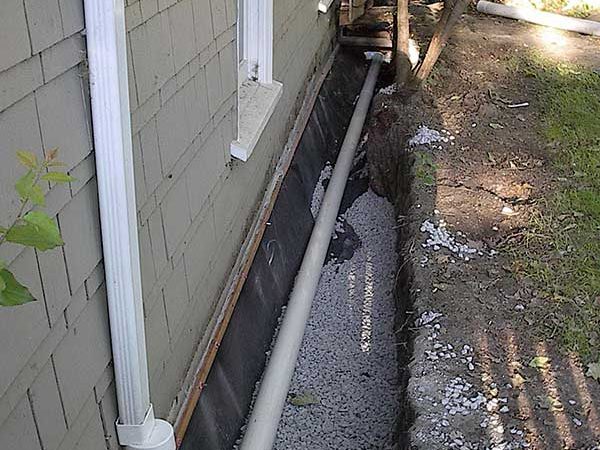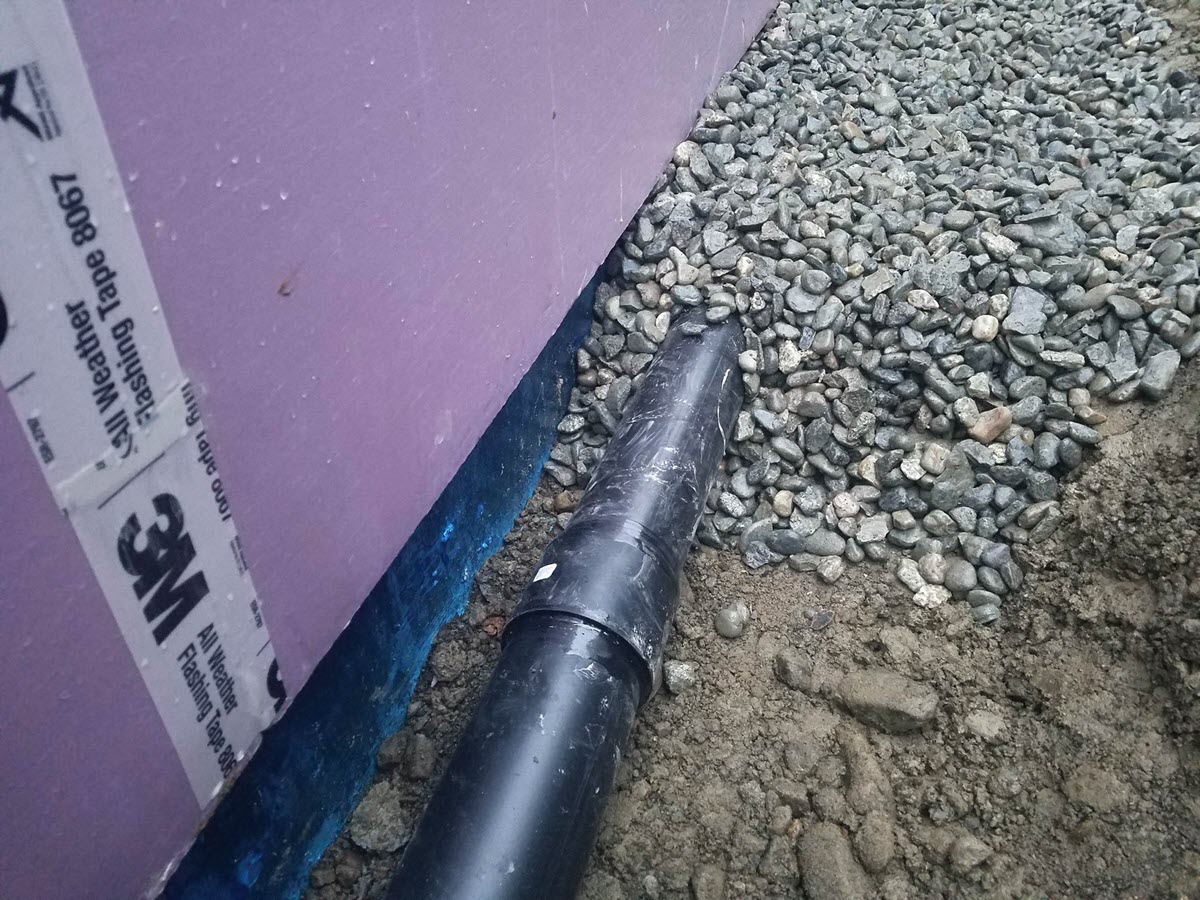Foundation Drain Servicesin Marysville MI
Foundation Drain Solutions to Keep Your Building Secure
We Are Locally Owned & Operated For Over 37 Years
Contact Us Today!
We Serve Businesses In And Around The Following Cities:
About Foundation Drain Services
A Comprehensive Guide to Foundation Drain in Marysville: Process, Benefits, and Real-world Applications for Commercial Properties
There is a general understanding among commercial property owners and managers in Marysville that an investment today can mitigate costly headaches tomorrow. One area that should not be overlooked is foundation drainage. Proper and efficient foundation drainage is crucial to ensure the stability and durability of any commercial property. This guide aims to provide an in-depth understanding of the role a robust foundation drain system can play, the process of implementation, real-world applications, benefits, and best practices for commercial properties in Marysville.
Understanding Foundation Drain
A Foundation Drain, fundamental part of commercial property infrastructure, is an exterior drainage system installed on the outer side of a building’s foundation. It could be a foundation french drain or a foundation footer drain; the goal is to direct water away from your commercial property’s foundation. Without a proper foundation drain around the building, the risk of water seepage and accumulation around the foundation increases, leading to a myriad of structural issues.
The Process of Installing a Foundation Drain
Installing a foundation drain is a precise process that requires expert intervention. Firstly, an appropriate location has to be identified around the building where excavation can start for installing the drain system around the foundation. Then, a foundation perimeter drain is dug around the entire length of the foundation. Post this, a layer of gravel is placed in the trench to aid in the easy diversion of water. Next, a perforated pipe is set in the trench, sloping away from the property, to collect and drain away the water. Lastly, this trench is covered with gravel and then soil.
The depth, gradient, and method of the drain installation—be it a foundation french drain or an exterior foundation drain—would depend on the specific needs of your property, soil type, and weather patterns in Marysville. Reliability lies in employing professionals like D&J Contracting who can efficiently handle diverse foundation drainage systems.
Bolstering the Safety of Your Commercial Property with Foundation Drain
Imagine a rainy day in Marysville with water pooling around your commercial property. Without a proper drainage near foundation, water could seep into the soil around your building, putting enormous pressure on the foundation and potentially causing cracks and structural damage. By channeling this water away from the property, a foundation water drainage system acts as a defensive barrier against water damage, protecting the integrity of your infrastructure.
Real-world Applications of Foundation Drain
Take the case of the recent redevelopment projects in downtown Marysville. They greatly benefitted from including foundation drainage system installations during the construction process itself. Foundation drains made it possible to efficiently manage the area’s high groundwater levels, ensuring the structural safety of these fresh constructions.
Another example is a large retail property on the outskirts of Marysville. This establishment frequently faced issues with crawl space and basement flooding. The owners saw a drastic reduction in these problems, avoiding expensive damage repair, once they invested in a proper foundation drain system. D&J Contracting was able to provide a customized solution in this case, further underlining the benefits of professional installation.
Benefits of a Foundation Drain
Installing a foundation drain is not just a preventative measure against potential damage; it also has many other benefits. Firstly, it increases the value of your property. Any prospective buyer or tenant will appreciate the effort put into maintaining the integrity of your property’s foundation. Secondly, a good drain system around foundation will keep your property dry and mold-free, making it a healthier environment for your occupants. Lastly, it also reduces the risk of a flooded basement, saving potentially high costs related to property damage and business disruptions.
Given these benefits, property owners should consider investing early in effective house foundation drainage solutions like those provided by D&J Contracting. Their expertise ensures that the installation process is smooth and catered to your specific property needs.
The significance of an efficient foundation drain system cannot be understated. Investing in a quality system is an investment in the long-term health and sustainability of your commercial property. Whether combating harsh weather conditions or simply improving the overall health of your property, a well-designed foundation drain not only solves immediate water drainage issues but also acts as a long-term strategy to mitigate future issues. For professional guidance and services, Marysville commercial entities can rely on D&J Contracting to deliver tailored and efficient solutions. With years of experience under their belt and a commitment to quality service, they stand ready to ensure the integrity of your building’s foundation.
Foundation Drain Services Gallery


Call Us Today to receive your Free Quote for
Foundation Drain in Marysville
Serving: Marysville, Michigan

About Marysville, Michigan
Marysville traces its history back to 1786 when Antoin Morass built a sawmill at Bunce Creek. Later, in 1817, Zephaniah W. Bunce sailed up the St. Clair River and settled at the place of the mill, naming it Bunce Creek. This would later become the property of the Detroit Edison Marysville Power Plant. He later became postmaster and a member of the Michigan Territorial Council.
Meanwhile, two businessmen, Meldrum & Park, founded a sawmill in 1792 at the location now known as Cuttle Creek. This settlement was located in the southern part of current day Marysville, two streets are named after them.
Also having a street named for him was Colonel Andrew Mack, a native and the 11th mayor of Detroit. He bought Meldrum and Park’s mill and built his home and a general store along the St. Clair River. The small settlement with Mack’s general store and mill was called “Mack’s Place” and was awarded a post office. Mack was a state representative, Colonel in the War of 1812, and a co-founder of the Detroit Free Press. Colonel Mack and his wife, Amelia, are buried on the north bank of Cuttle Creek in the Riverview Golf Course.
Later, Edward P. Vickery settled at the present day foot of Huron Boulevard in Marysville. He named the operation Vickery’s Landing and the settlement surrounding it eventually became known as Vicksburg. In 1854, the Mack’s Place post office was transferred to Vicksburg. However, there was already another Vicksburg, Michigan, so in 1859 the name was changed to Marysville, after Nelson Mill’s wife Mary.
These small settlements were brought together by inventor and engineer, C. Harold Wills. He worked at the Ford Motor Company, and was considered the “right-hand man” of Henry Ford. His contributions to the Ford company included designing Models A through T of the early Ford Motor Company. He was the inventor of many auto improvements including the planetary transmission used in the Models S and T. He was a pioneer in the use of vanadium steel and designed the “Blue Oval” logo, still used on Ford Products today. He resigned in 1919 and moved to Marysville to establish the C. H. Wills & Company on the banks of the St. Clair River. Two years later in 1921, the first Wills Ste. Clair automobile was produced (named for the factory’s location on the St. Clair River). The factory closed in 1926 after 14,000 vehicles were made by the Wills factory.
Wills’ and his partner John Lee provided much of the early infrastructure of Marysville, including electricity, sidewalks, roads, etc. so that Wills is credited with the street design and city planning of Marysville. He nicknamed Marysville the “Dream City”. The main area of the city to be developed before his company folded was the area surrounding Washington Elementary School. The community was deeply affected by the Great Depression, and the vision for the city was never fully realized. Subdivision development in the later half of the 20th century has further offset the strategic plan for the City of Marysville.
Wills did succeed to the extent that the Marysville area is nowadays a vibrant community. Wills’ former factory currently houses the Chrysler Corporation MOPAR parts distribution facility.
Marysville was incorporated as a village in 1919. It became an incorporated city in 1924.
- According to the United States Census Bureau, the city has a total area of 8.30 square miles (21.50 km), of which 7.31 square miles (18.93 km) is land and 0.99 square miles (2.56 km) is water.
- It is considered to be part of the Thumb of Michigan.
- Marysville can also be considered as in the Blue Water Area.
- The city lies on the border between Michigan and Ontario formed by the St. Clair River
- Marysville is neighbored by Port Huron, Michigan to the north, St. Clair, Michigan to the south, Kimball Township, Michigan to the west, and Corunna, Ontario to the east.
| Census | Pop. | Note | %± |
|---|---|---|---|
| 1920 | 941 | — | |
| 1930 | 1,405 | 49.3% | |
| 1940 | 1,777 | 26.5% | |
| 1950 | 2,534 | 42.6% | |
| 1960 | 4,065 | 60.4% | |
| 1970 | 5,610 | 38.0% | |
| 1980 | 7,345 | 30.9% | |
| 1990 | 8,515 | 15.9% | |
| 2000 | 9,684 | 13.7% | |
| 2010 | 9,959 | 2.8% | |
| 2020 | 9,997 | 0.4% | |
| U.S. Decennial Census | |||
As of the census of 2010, there were 9,959 people, 4,160 households, and 2,738 families residing in the city. The population density was 1,362.4 inhabitants per square mile (526.0/km). There were 4,515 housing units at an average density of 617.6 units per square mile (238.5 units/km). The racial makeup of the city was 97.5% White, 0.3% African American, 0.2% Native American, 0.6% Asian, 0.4% from other races, and 0.9% from two or more races. Hispanic or Latino of any race were 1.8% of the population.
There were 4,160 households, of which 29.8% had children under the age of 18 living with them, 53.1% were married couples living together, 9.1% had a female householder with no husband present, 3.6% had a male householder with no wife present, and 34.2% were non-families. 30.3% of all households were made up of individuals, and 14.7% had someone living alone who was 65 years of age or older. The average household size was 2.39 and the average family size was 2.99.
The median age in the city was 42 years. 23.4% of residents were under the age of 18; 7% were between the ages of 18 and 24; 24% were from 25 to 44; 28% were from 45 to 64; and 17.5% were 65 years of age or older. The gender makeup of the city was 48.1% male and 51.9% female.
As of the census of 2000, there were 9,684 people, 4,025 households, and 2,741 families residing in the city. The population density was 1,395.6 inhabitants per square mile (538.8/km). There were 4,180 housing units at an average density of 602.4 units per square mile (232.6 units/km). The racial makeup of the city was 98.18% White, 0.18% African American, 0.30% Native American, 0.43%Asian, 0.01% Pacific Islander, 0.33% from other races, and 0.57% from two or more races. Hispanic or Latino of any race were 1.16% of the population.
There were 4,025 households, out of which 30.8% had children under the age of 18 living with them, 57.4% were married couples living together, 8.0% had a female householder with no husband present, and 31.9% were non-families. 28.5% of all households were made up of individuals, and 14.3% had someone living alone who was 65 years of age or older. The average household size was 2.40 and the average family size was 2.96.
In the city, the population was spread out, with 24.4% under the age of 18, 6.9% from 18 to 24, 28.4% from 25 to 44, 23.3% from 45 to 64, and 17.1% who were 65 years of age or older. The median age was 39 years. For every 100 females, there were 94.0 males. For every 100 females age 18 and over, there were 89.2 males.
The median income for a household in the city was $49,299, and the median income for a family was $60,028. Males had a median income of $47,859 versus $27,321 for females. The per capita income for the city was $23,443. About 3.1% of families and 4.6% of the population were below the poverty line, including 5.1% of those under age 18 and 8.4% of those age 65 or over.
Call Us Today to receive your Free Quote for
Foundation Drain in Marysville
Related Services in Marysville, Michigan
We Serve Businesses In The Following Zip Codes:
48007, 48015, 48021, 48026, 48035, 48036, 48038, 48042, 48043, 48044, 48045, 48046, 48047, 48048, 48050, 48051, 48066, 48071, 48080, 48081, 48082, 48083, 48084, 48085, 48088, 48089, 48090, 48091, 48092, 48093, 48098, 48099, 48225, 48230, 48236, 48310, 48311, 48312, 48313, 48314, 48315, 48316, 48317, 48318, 48397